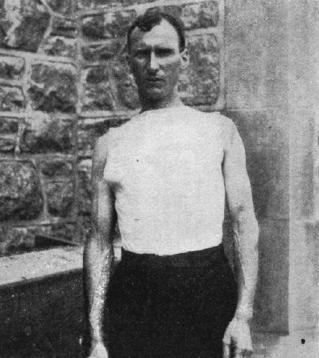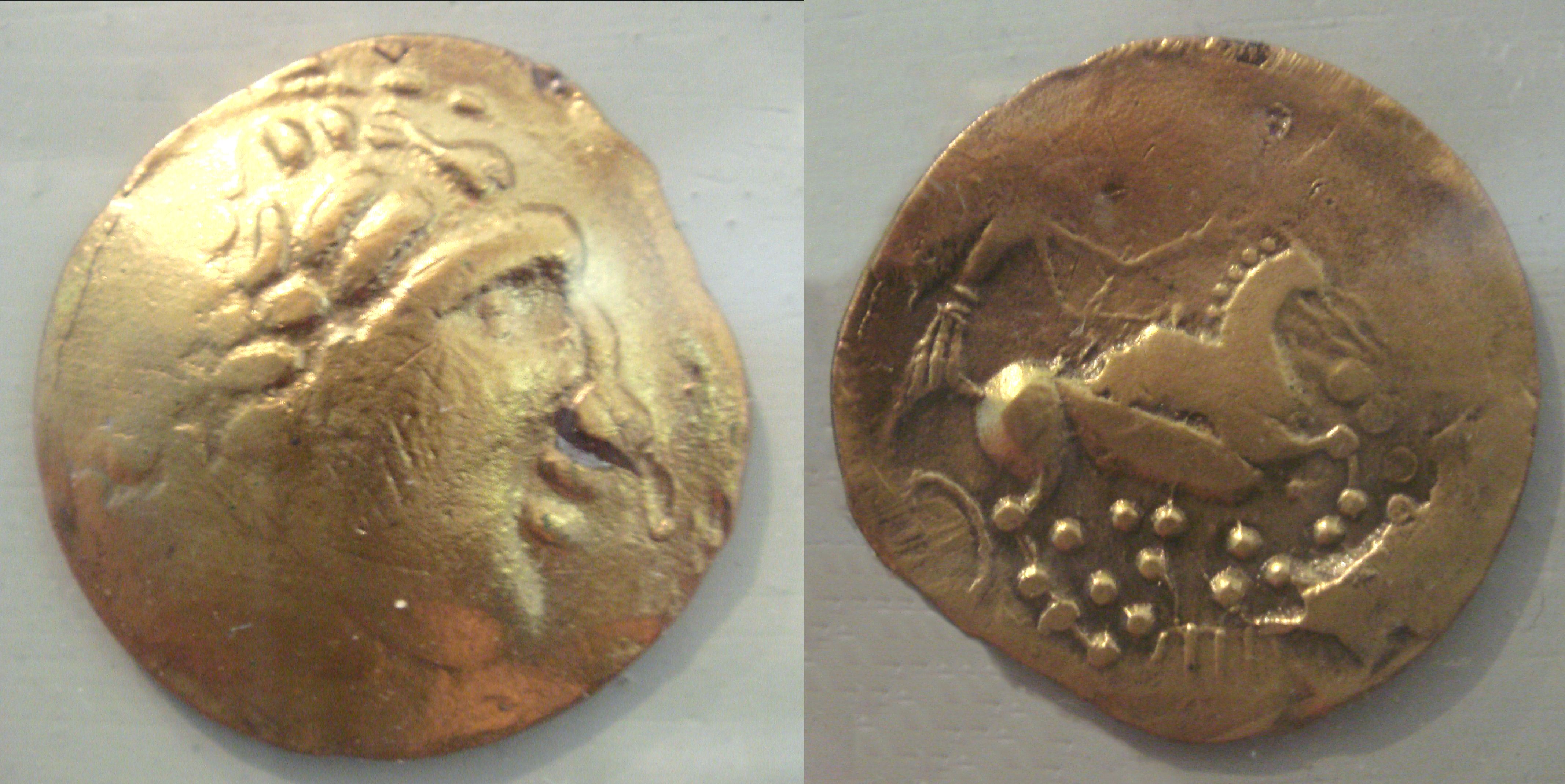|
Jean-René Cruchet
Jean-René Cruchet (21 March 1875, Bordeaux – 14 April 1959, Bordeaux) was a French pathologist. Education and career In 1902 he obtained his medical doctorate at the University of Bordeaux and subsequently became ''chef de clinique médicale''. In 1907 he received his habilitation and became ''médecin des hôpitaux''. He became a professor of general pathology in 1920, and in 1926 attained the chair of pediatrics at Bordeaux. Cruchet is remembered for his research of spasmodic torticollis. In 1907 he published ''Traité des torticolis spasmodiques'', an influential monograph in which he documented 357 cases of torticollis. He also conducted investigations on tic disorders and studies of motion sickness experienced by aviators. In the winter of 1915–16 he was the first physician to give a report on encephalitis lethargica (Economo's disease). He first noticed the presence of the disease in French soldiers at Verdun. Historically encephalitis lethargica was referred to ... [...More Info...] [...Related Items...] OR: [Wikipedia] [Google] [Baidu] |
Verdun
Verdun ( , ; ; ; official name before 1970: Verdun-sur-Meuse) is a city in the Meuse (department), Meuse departments of France, department in Grand Est, northeastern France. It is an arrondissement of the department. In 843, the Treaty of Verdun, which divided the Carolingian Empire into three kingdoms—considered the foundation of Germany and France—was signed there. An episcopal principality of the Holy Roman Empire since the 10th century, Verdun was subjugated by France in 1552, during the "Voyage to Austrasia". Along with the other free cities of the Empire, Metz and Toul, it formed the province of the Three Bishoprics, which was attached to the Kingdom of France in 1648 by the Treaty of Münster (1648), Treaty of Münster. Verdun is the biggest city in Meuse, although the capital of the department is Bar-le-Duc, which is slightly smaller than Verdun. It is well known for giving Battle of Verdun, its name to the longest battle in modern history in the World War I, Fir ... [...More Info...] [...Related Items...] OR: [Wikipedia] [Google] [Baidu] |
1875 Births
Events January * January 1 – The Midland Railway of England abolishes the Second Class passenger category, leaving First Class and Third Class. Other British railway companies follow Midland's lead during the rest of the year (Third Class is renamed Second Class in 1956). * January 5 – The Palais Garnier, one of the most famous opera houses in the world, is inaugurated as the home of the Paris Opera. * January 12 – Guangxu Emperor, Guangxu becomes the 11th Qing dynasty Emperor of China at the age of 3. He succeeds his cousin, the Tongzhi Emperor, who had no sons of his own. * January 14 – The newly proclaimed King Alfonso XII of Spain (Queen Isabella II's son) arrives in Spain to restore the monarchy during the Third Carlist War. * January 24 – Camille Saint-Saëns' orchestral ''Danse macabre (Saint-Saëns), Danse macabre'' receives its première. February * February 3 – Third Carlist War: Battle of Lácar – Carlist commander Torcuat ... [...More Info...] [...Related Items...] OR: [Wikipedia] [Google] [Baidu] |
Physicians From Bordeaux
A physician, medical practitioner (British English), medical doctor, or simply doctor is a health professional who practices medicine, which is concerned with promoting, maintaining or restoring health through the Medical education, study, Medical diagnosis, diagnosis, prognosis and therapy, treatment of disease, injury, and other physical and mental impairments. Physicians may focus their practice on certain disease categories, types of patients, and methods of treatment—known as Specialty (medicine), specialities—or they may assume responsibility for the provision of continuing and comprehensive medical care to individuals, families, and communities—known as general practitioner, general practice. Medical practice properly requires both a detailed knowledge of the Discipline (academia), academic disciplines, such as anatomy and physiology, pathophysiology, underlying diseases, and their treatment, which is the science of medicine, and a decent Competence (human resources ... [...More Info...] [...Related Items...] OR: [Wikipedia] [Google] [Baidu] |
Who Named It
''Whonamedit?'' is an online English-language dictionary of medical eponyms and the people associated with their identification. Though it is a dictionary, many eponyms and persons are presented in extensive articles with comprehensive bibliographies. The dictionary is hosted in Norway Norway, officially the Kingdom of Norway, is a Nordic countries, Nordic country located on the Scandinavian Peninsula in Northern Europe. The remote Arctic island of Jan Mayen and the archipelago of Svalbard also form part of the Kingdom of ... and was developed by medical historian Ole Daniel Enersen. References External links * Medical websites Medical dictionaries Eponyms in medicine {{online-dict-stub ... [...More Info...] [...Related Items...] OR: [Wikipedia] [Google] [Baidu] |
Encephalitis
Encephalitis is inflammation of the Human brain, brain. The severity can be variable with symptoms including reduction or alteration in consciousness, aphasia, headache, fever, confusion, a stiff neck, and vomiting. Complications may include seizures, hallucinations, trouble speaking, memory problems, and problems with hearing. Causes of encephalitis include viruses such as herpes simplex virus and rabies virus as well as bacteria, fungi, or parasites. Other causes include autoimmune diseases and certain medications. In many cases the cause remains unknown. Risk factors include a immunosuppression, weak immune system. Diagnosis is typically based on symptoms and supported by blood tests, medical imaging, and analysis of cerebrospinal fluid. Certain types are preventable with vaccines. Treatment may include antiviral medications (such as acyclovir), anticonvulsants, and corticosteroids. Treatment generally takes place in hospital. Some people require artificial respiration. Once ... [...More Info...] [...Related Items...] OR: [Wikipedia] [Google] [Baidu] |
Paul Carnot
Paul Carnot (16 January 1869, in Limoges – 1 April 1957, in Paris) was a French physician. He served as ''médecin des hôpitaux'' in Paris, becoming a professor of therapeutic medicine in 1918 to the Paris medical faculty. In 1922 he was elected as a member to the '' Académie de Médecine''. Career In 1906 he coined the term ''hémopoïétine'' ( hemopoietin) to define a humoral factor he believed was responsible for regulation of red blood cell production. This being based on experiments with laboratory rabbits that he conducted with his graduate student Clotilde-Camille DeFlandre. They noticed that an increase of reticulocytes in normal rabbits occurred following the injection of blood plasma taken from anemic donor rabbits who had earlier been subject to bloodletting. Findings from their research were published in a paper titled ''Sur l'activité hémopoïétique du sérum au cours de la régénération du sang'' (On the hemopoietic activity of serum during the regener ... [...More Info...] [...Related Items...] OR: [Wikipedia] [Google] [Baidu] |
Augustin Nicolas Gilbert
Augustin Nicolas Gilbert (; 15 February 1858 – 4 March 1927) was a French physician. He was born in the town of Buzancy, Ardennes, and died in Paris. He received his doctorate from the University of Paris and became an intern at the Hôtel-Dieu de Paris. Later he was a professor of therapeutics (1902) and clinical medicine (1905) at Hôtel-Dieu. In 1907 he became a member of the ''Académie de Médecine''. He published many articles and books on a wide array of medical subjects. With Jean Alfred Fournier (1832-1914) he published ''Bibliothèque rouge de l'étudiant en médecine'', and with Paul Brouardel (1837-1906) and others, he published the multi-volume ''Traité de médecine et de Thérapeutique''. With neurologist Maurice Villaret (1877–1946), he conducted extensive research of portal hypertension. Gilbert described a hereditary cause of increased bilirubin; today this disorder is known as Gilbert's syndrome and is believed to be caused by a deficiency of the enzyme gl ... [...More Info...] [...Related Items...] OR: [Wikipedia] [Google] [Baidu] |
Meningitis
Meningitis is acute or chronic inflammation of the protective membranes covering the brain and spinal cord, collectively called the meninges. The most common symptoms are fever, intense headache, vomiting and neck stiffness and occasionally photophobia. Other symptoms include confusion or altered consciousness, nausea, and an inability to tolerate loud noises. Young children often exhibit only nonspecific symptoms, such as irritability, drowsiness, or poor feeding. A non-blanching rash (a rash that does not fade when a glass is rolled over it) may also be present. The inflammation may be caused by infection with viruses, bacteria, fungi or parasites. Non-infectious causes include malignancy (cancer), subarachnoid hemorrhage, chronic inflammatory disease ( sarcoidosis) and certain drugs. Meningitis can be life-threatening because of the inflammation's proximity to the brain and spinal cord; therefore, the condition is classified as a medical emergency. A lumba ... [...More Info...] [...Related Items...] OR: [Wikipedia] [Google] [Baidu] |
Encephalitis Lethargica
Encephalitis lethargica (EL) is an atypical form of encephalitis. Also known as "von Economo Encephalitis", "sleeping sickness" or "sleepy sickness" (distinct from tsetse fly–transmitted sleeping sickness), it was first described in 1917 by neurologist Constantin von Economo and pathologist Jean-René Cruchet. The disease attacks the brain, leaving some victims in a statue-like condition, speechless and motionless. Between 1915 and 1926, an epidemic of encephalitis lethargica spread around the world. The exact number of people infected is unknown, but it is estimated that more than one million people contracted the disease during the epidemic, which directly caused more than 500,000 deaths. Most of those who survived never recovered their pre-morbid vigour. Signs and symptoms Encephalitis lethargica is characterized by high fever, sore throat, headache, lethargy, double vision, delayed physical and mental response, sleep inversion and catatonia. In severe cases, patients ... [...More Info...] [...Related Items...] OR: [Wikipedia] [Google] [Baidu] |
Bordeaux
Bordeaux ( ; ; Gascon language, Gascon ; ) is a city on the river Garonne in the Gironde Departments of France, department, southwestern France. A port city, it is the capital of the Nouvelle-Aquitaine region, as well as the Prefectures in France, prefecture of the Gironde department. Its inhabitants are called "''Bordelais'' (masculine) or "''Bordelaises'' (feminine). The term "Bordelais" may also refer to the city and its surrounding region. The city of Bordeaux proper had a population of 259,809 in 2020 within its small municipal territory of , but together with its suburbs and exurbs the Bordeaux Functional area (France), metropolitan area had a population of 1,376,375 that same year (Jan. 2020 census), the sixth-most populated in France after Paris, Lyon, Marseille, Lille, and Toulouse. Bordeaux and 27 suburban municipalities form the Bordeaux Métropole, Bordeaux Metropolis, an Indirect election, indirectly elected Métropole, metropolitan authority now in charge of wi ... [...More Info...] [...Related Items...] OR: [Wikipedia] [Google] [Baidu] |
Motion Sickness
Motion sickness occurs due to a difference between actual and expected motion. Symptoms commonly include nausea, vomiting, cold sweat, headache, dizziness, tiredness, loss of appetite, and increased salivation. Complications may rarely include dehydration, electrolyte problems, or a lower esophageal tear. The cause of motion sickness is either real or perceived motion. This may include car travel, air travel, sea travel, space travel, or reality simulation. Risk factors include pregnancy, migraines, and Ménière's disease. The diagnosis is based on symptoms. Treatment may include behavioral measures or medications. Behavioral measures include keeping the head still and focusing on the horizon. Three types of medications are useful: antimuscarinics such as scopolamine, H1 antihistamines such as dimenhydrinate, and amphetamines such as dexamphetamine. Side effects, however, may limit the use of medications. A number of medications used for nausea such as ondansetro ... [...More Info...] [...Related Items...] OR: [Wikipedia] [Google] [Baidu] |







